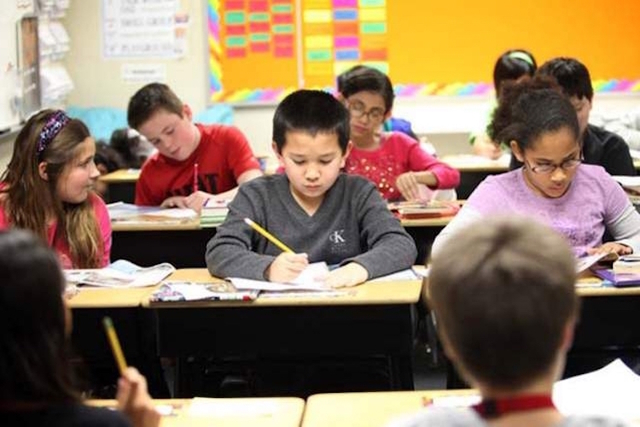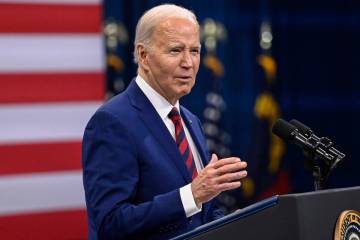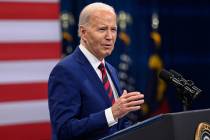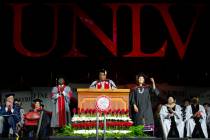Democrats oppose plan to increase per-pupil funding
It’s a litmus test for Nevada Democrats and membership in the state’s education establishment: the belief that increased education funding leads to improved student achievement.
Conservatives note that a near tripling of Nevada’s inflation-adjusted per-pupil spending over 50 years hasn’t produced notable proficiency gains. Nevertheless, there is a plan to increase per-pupil funding that Nevada Republicans are eager to support.
So it’s ironic that legislative Democrats have said they will oppose this policy during the upcoming legislative session. Even though this policy to boost per-pupil funding likely would garner unanimous Republican support, Senate Majority Leader Aaron Ford, D-Las Vegas, told my colleague Steve Sebelius last month that, at this time, Democrats have “no intention” of passing it.
Ford was speaking of Education Savings Accounts, which were passed by the Legislature and signed into law by Gov. Brian Sandoval in 2015 but struck down by the Nevada Supreme Court last year.
ESAs would have allowed parents to gain control of a portion of the money Nevada spends on a student’s public education. Parents can use those funds to pay for private school tuition, online schooling, home-based education or tutors and technology. ESAs allow families to mix and match services to customize their child’s education and even carry over any unused money for future years.
The court held that ESAs are constitutional, but the funding source established by lawmakers was improper. Lawmakers can enact a fix this year by dedicating new funding.
For most parents, ESAs would have been worth $5,196 in 2017. For low-income parents or students with special needs, ESAs would have been worth $5,774 each year.
Democrats argue that these allocations would strip funding from public schools. But taxpayers spend far more on education.
Students who use an ESA would give up their share of two-thirds of the 75-cent property tax assessment dedicated to education as well as their share of $155 million for class-size reduction, funding for programs such as Victory and Zoom schools and others. Statewide, these sources total more than $900 million for the 2016-17 school year. And then there are federal funds and money for capital projects. At the Clark County School District, that’s an additional $600 million-plus.
In total, a student who leaves the Clark County School District to open an ESA would walk away from $4,000 to $4,600 per year. The actual amount of savings to the district would vary based on which programs the student would have participated in.
That money wouldn’t just disappear. The vast majority of it would stay in the school district and be spent on remaining students.
With 8,000 applicants — including one of my children — a fully funded ESA program would reduce overall spending on public education by $42 million. But per-pupil funding is a two-sided equation. There would be 8,000 fewer public school students. Assuming, for the sake of discussion, that all were Clark County residents, they would have cost taxpayers more than $77 million. ESAs would produce a $35 million savings. Because that savings would remain in the system, per pupil funding would increase.
Democrats shouldn’t reject this opportunity to increase per-student spending simply because Republicans support it. The Legislature should fund this win-win proposal.
Victor Joecks’ column appears in the Nevada section each Sunday, Wednesday and Friday. Contact him at vjoecks@reviewjournal.com. Follow @victorjoecks on Twitter.























